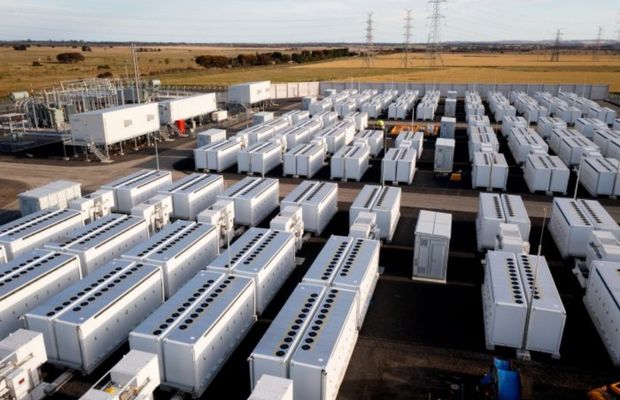Battery energy storage systems (BESS) play a crucial role in maximizing the benefits of utility-scale renewable energy projects. Here are some strategies to optimize their integration and utilization:

- Peak Shaving and Load Balancing: Battery energy storage systems (BESS) can be utilized to store excess energy generated during periods of low demand and discharge it during peak demand periods. This helps in reducing peak demand charges and ensures a more balanced and stable grid operation.
- Renewable Energy Smoothing: Renewable energy sources such as wind and solar are intermittent by nature. Battery energy storage systems (BESS) can smooth out the intermittency by storing excess energy when generation is high and releasing it during periods of low generation, thereby ensuring a consistent and reliable power supply.
- Frequency Regulation and Grid Stabilization: Battery energy storage systems (BESS) can respond rapidly to fluctuations in grid frequency, providing ancillary services such as frequency regulation and grid stabilization. This enhances grid reliability and enables the integration of more renewable energy resources into the grid.
- Integration with Forecasting and Control Systems: Integrating battery energy storage systems (BESS) with advanced forecasting and control systems allows for optimized operation and management of both renewable energy generation and energy storage. Real-time monitoring and control help in maximizing the economic benefits and grid stability.
- Time-of-Use Optimization: Battery energy storage systems (BESS) can be programmed to charge during periods of low electricity prices and discharge during high-price periods, thereby maximizing revenue generation and cost savings for project developers and utilities.
- Backup Power and Resilience: Battery energy storage systems (BESS) can provide backup power during grid outages, ensuring continuity of supply for critical loads. This enhances grid resilience and reliability, especially in areas prone to extreme weather events or natural disasters.
- Demand Response and Peak Demand Management: Battery energy storage systems (BESS) can participate in demand response programs by discharging during times of peak demand, thereby reducing strain on the grid and avoiding the need for costly infrastructure upgrades.
- Capacity Firming for Renewables: Battery energy storage systems (BESS) can provide capacity firming for renewable energy projects, ensuring that the contracted capacity is available when needed, even during periods of low renewable energy generation.
- Grid Services and Revenue Stacking: Battery energy storage systems (BESS) can generate revenue by providing various grid services such as capacity, energy arbitrage, ancillary services, and frequency regulation. Revenue stacking involves participating in multiple markets simultaneously to maximize revenue streams.
- Lifecycle Cost Analysis and Optimization: Conducting lifecycle cost analysis helps in optimizing the size, configuration, and operation of battery energy storage systems (BESS) to maximize benefits while minimizing costs over the project’s lifetime.
By implementing these strategies, utility-scale renewable energy projects can effectively maximize the benefits of battery energy storage systems, thereby accelerating the transition to a more sustainable and resilient energy system.
